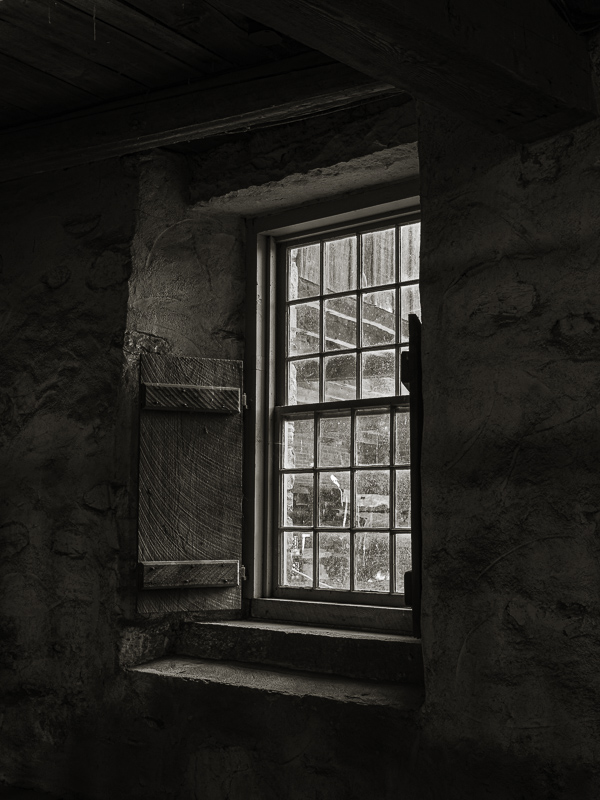Every Picture Is a Compromise
Lessons from the Also-rans
Most photography websites show the photographer's very best work. Wonderful. But that's not the full story of a creative life. If we want to learn, we'd better pay attention to the images that aren't "greatest hits" and see what lessons they have to offer. Every picture is a compromise — the sum of its parts, optical, technical, visual, emotional, and even cosmic – well, maybe not cosmic, but sometimes spiritual. Success on all fronts is rare. It's ok to learn from those that are not our best.
This is a series about my also-rans, some of which I've been able to improve at bit (i.e., "best effort"), none of which I would consider my best. With each there are lessons worth sharing, so I will.

Previous image | Next image |
Original digital capture

Architectural Tourist Week
This week I'm looking at image made while touring historic buildings and their interiors. Dark, three-dimmensional, and cramped subjects imply using high ISO, focus stacking, and with tripods not allowed, these are all handheld. Very technically challenging subjects. It is very fun to overcome these difficulties and end up with images that I'd be happy to show anyone.
What I saw that I liked:
I'll start this week with an easy one. This window in an old barn was so nostalgic. Okay, well, maybe a little cliché. Or a lot cliché. Sometimes you don't care and just make the picture anyway.
What I don't like in the picture:
The contrast ratio here was extreme.
What I learned:
I debated for a bit as to whether or not I should shoot this using HDR. I decided against it because I knew I could pull up the shadows some without losing much in the image content. I waited for an overhead cloud outside so I could expose to retain details seen through the window and trusted to dynamic range to the inside texture on the walls. I particularly like the circular cut on the window shutters. Handheld at 1/8th second, ISO 200 — so no noise reduction on this one at all. |
|


